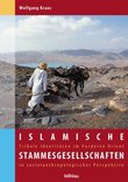Explore

Das Buch stellt die erste umfassende Auseinandersetzung mit dem Phänomen tribaler Identität im Vorderen Orient in deutscher Sprache dar. Es verbindet eine komparativ und theoretisch orientierte Untersuchung von Gemeinsamkeiten und Unterschieden islamischer Stammesgesellschaften mit einer eingehenden empirischen Fallstudie. Die separate Identität im Inneren umfassenderer politisch-kultureller Gemeinschaften, die Stämme im Vorderen Orient kennzeichnet, drückt sich typischerweise im Streben nach politischer Autonomie aus, das sich je nach historischen Bedingungen in sehr unterschiedlichem Ausmaß realisieren läßt. Das Buch untersucht kulturelle Dimensionen und praktische Erscheinungsformen tribaler Identität in diesem Spannungsfeld. Am Anfang steht eine kritische Aufarbeitung des sozial- und kulturanthropologischen Stammesbegriffes. Ausgehend von der Einsicht, daß die wesentlichen Übereinstimmungen verschiedener islamischer Stämme im kulturell-ideologischen Bereich zu finden sind, werden allgemeine Charakteristika nahöstlicher Stammesgesellschaften herausgearbeitet. Spezifische kulturelle Modellen tribaler Identität, besonders die ideologische und praktische Rolle der Beziehungen von Verwandtschaft und Heirat, werden ebenso untersucht wie die variablen praktischen Erscheinungsformen tribaler Organisation. Der erste Teil schließt mit einer kritischen Aufarbeitung unterschiedlicher theoretischer Zugänge.Der zweite Teil wendet am Beispiel eines zentralmarokkanischen Berberstammes die im ersten Teil erarbeiteten theoretischen Perspektive an. Nach einer Analyse der historischen und geographischen Rahmenbedingungen werden die Geschichte des Stammes und die Quellen für ihre Kenntnis sowie traditionelle politische und rechtliche Institutionen untersucht und die Veränderungen skizziert, denen diese im 20. Jh. unterworfen waren. Dann werden die hierarchisch geordneten lokalen Statuskategorien und die segmentäre Gliederung des Stammes im Detail analysiert. Die Auseinandersetzung mit dem oral tradierten lokalen Wissen über die Vergangenheit zeigt schließlich, daß der historische Diskurs der untersuchten Gesellschaft ein privilegiertes Feld für die Untersuchung der Ideologien und kulturellen Konzeptionen darstellt, die einerseits tribale Identität konstituieren und andererseits dazu beitragen, diese zu relativieren und zu transzendieren. Ein wichtiges methodisches Prinzip ist dabei, das Vorhandensein von Brüchen und Widersprüchen nicht zu ignorieren. Der orale historische Diskurs eröffnet nicht nur einen Einblick in die sinngebenden Zusammenhänge tribaler Identität. Er zeigt auch, wie verdeckt immer wieder die dominierenden ideologischen Modelle in Frage gestellt werden. Auch auf der kulturell-ideologischen Ebene kann tribale Identität nur in ihren Wechselwirkungen mit der übergeordneten islamischen Identität verstanden werden. Diese Wechselwirkungen müssen jedoch als historisch bedingt und somit variabel aufgefaßt werden.
This book is included in DOAB.
Why read this book? Have your say.
You must be logged in to comment.
Rights Information
Are you the author or publisher of this work? If so, you can claim it as yours by registering as an Unglue.it rights holder.Downloads
- 109 - pdf (CC BY-NC-ND) at OAPEN Library.
- 85 - pdf (CC BY-NC-ND) at OAPEN Library.
Keywords
- Agnat
- Ayr
- Ethnologie
- généalogie
- Ideologie
- Islamic sociology
- Marokko
- Middle Eastern
- Muslim tribal societies
- Naher Osten
- Nordafrika
- oral historical discourse
- Orale Tradition
- Society & Social Sciences
- Stamm
- thema EDItEUR::J Society and Social Sciences
- tribal identity
- Tribes
Links
DOI: 10.26530/oapen_574825Editions

